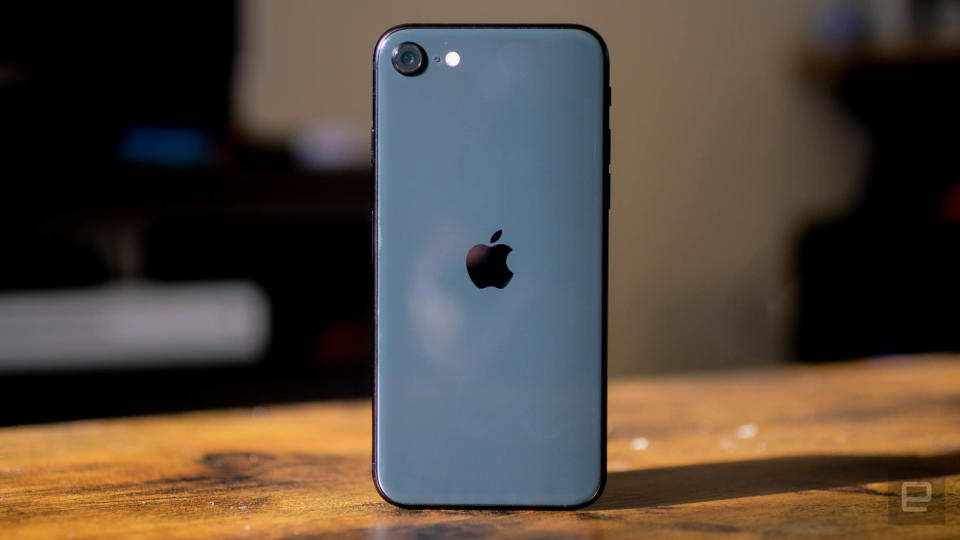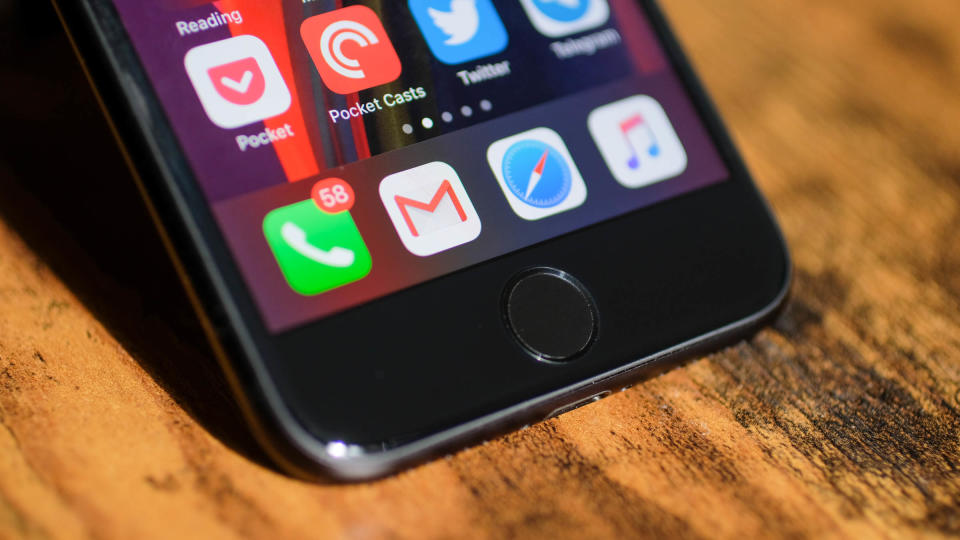Apple iPhone SE review (2020): Great phone, even better price
This cheap iPhone is as practical as it is powerful.
Every September, just like clockwork, Apple reveals a handful of new high-end phones. If this year’s rumors hold true — and if the company’s plans don’t get delayed — its 2020 flagships will come with super-fast new processors, LiDAR sensors for better depth detection and new designs inspired by the iPad Pro. They will cost a lot of money, and they’ll probably be great. I mention this because, despite everything the new devices will bring to the table, the new iPhone SE might be the most important phone Apple releases this year.
It’s not just because the iPhone SE is cheap, though it certainly is: The base model costs only $399. No, what makes the SE so valuable is that it doesn’t act like a $399 phone. The iPhone SE isn’t just a good deal — it’s a big deal. For people clinging to ancient phones because new ones are too large, too expensive or too gimmicky, the iPhone SE is the right phone at the right time at the right price.
Key specs
| Apple iPhone SE (2020) |
|---|---|
Processor | A13 Bionic |
Internal storage | 64GB, 128GB and 256GB |
Main Display | 4.7-inch Retina HD LCD display |
Display resolution | 1,334x750 (16:9) |
Rear cameras | 12MP f/1.8 camera with HDR and optical image stabilization |
Front-facing camera | 7MP f/2.2 camera |
OS | iOS 13.4 |
Charging | Lightning, supports 18W+ fast charging and Qi wireless charging |
Dimensions | 138.4 x 67.3 x 7.3 mm |
Weight | 148g |
Fingerprint sensor | Yes, in home button |
Waterproofing | IP67 |
NFC | Yes |
Headphone jack | No |
Configurations
If you're thinking about picking up an iPhone SE, you have a few decisions to make. First up: What color you're going to show off for the next few years. The iPhone SE comes in black, white and PRODUCT(RED) finishes, and it's worth noting all of these models have black fronts. (Some geeky corners of the internet have been clamoring for a black-and-white iPhone for years — if that's you, this is your time.)
The more important decision is how much storage you'll need. As I mentioned, the base iPhone SE costs $399, which nets you 64GB of room to play with. That'll be enough for plenty of people, but the safest bet is to shell out an extra $50 for the 128GB model. There's also a 256GB model for $550, which might make more sense if you shoot loads of videos or have a massive media collection.

What’s old is new again
In case you hadn’t noticed, Apple is no stranger to budget gadget territory. Apple’s first budget iPhone, the 5c, was released in 2015 to pretty tepid sales. But the original iPhone SE — which packed the guts of an iPhone 6s into the body of a 5s — quickly became a fan-favorite. Since then, the iPhone XR, iPhone 11 and the company’s low-cost iPads have become some of Apple’s biggest hits. In other words, people like expensive iOS devices, but they love cheap ones.
It might be a little reductive, but the easiest way to think about the iPhone SE is that it squeezes a lot of what makes the iPhone 11 so potent into the body of an iPhone 8. When it comes to performance, that's great news, but I just have to say it: The iPhone SE looks dated. This design hasn't changed in three years. Since then, we've seen mid-range Android smartphones adopt edge-to-edge displays and sprout multiple rear cameras — the SE can't help but look basic by comparison. That's due in large part to its screen: a 4.7-inch Retina display that runs at 1,334x750, and it's basically the same display we got three years ago.
Now, there's nothing necessarily wrong with the screen, especially considering the price. It's plenty bright for outdoor use, and colors look decently rich thanks to wide color gamut support. There's a TrueTone sensor to measure your ambient light and tune the screen's color temperature to look natural no matter where you're sitting. And even though it runs at a lower resolution than every other smartphone Apple makes, its smaller screen means you're looking at the same pixel density as the iPhone 11 — you'll never see individual pixels unless you press your nose right up to the glass.
I'm not going to sit here and tell you I'm in love with this screen — it's easily the least impressive part of this phone. Even so, this display is perfectly fine for what it is. The only real question is whether it's big enough for you. Frankly, it isn't for me: My eyes aren’t great, so I gravitate toward phones with bigger screens. And my thumbs are sort of fat, so typing on this display took a lot longer to get used to than I had hoped. If some of that rings true for you, too, the iPhone SE may not be the right fit.
Of course, there are people for whom the opposite might be true. I've met a surprising number of people over the years who found the original iPhone SE design — the one it shared with the iPhone 5s — ideal. For them, this newer version might actually feel a little too big. What can I say? It all boils down to taste.
If you are a fan of this smaller design, though, you'll reap a few unexpected rewards. For one, if you ever break this phone, you'll spend less repairing it than you would with a more premium iPhone. Apple says it's going to charge $129 for iPhone SE screen replacements — that's $20 less than the same procedure for an iPhone 8 and $70 less than to replace an iPhone 11's screen. The same goes for battery replacements without AppleCare. If your SE’s battery eventually tanks, it’ll cost $49 to swap for a new one — for Apple’s premium phones, it’s $69. It's easy to get hung up on how little you'll spend on an iPhone SE, but it's important to know that it won't cost a ton to keep it running if something goes wrong.

Obviously, there's more to this phone than just its screen. That huge bit of bezel at the bottom has a solid-state home button with a proper Touch ID sensor, and I have to say I forgot how good these things were. Setting it up takes moments at most, it reads fingerprints almost instantly and — maybe most important these days — it still lets you unlock the phone while wearing a mask. This throwback iPhone body also rates IP67 for water and dust resistance, so it can sit in a meter of water for up to 30 minutes before you need to properly freak out. (For what it's worth, this kind of life-proofing is rare among the iPhone SE's Android-powered competitors.)
Apple made some important under-the-hood tweaks here, too. The SE is the company's first small iPhone to support dual SIM use with an eSIM, making it a great international travel companion. (You know, when we can finally start doing that again.) Apple also added support for gigabit LTE and WiFi 6 here — the latter is especially good news if you already splurged on a compatible router.
Ultimately, the iPhone SE isn't the prettiest phone out there, but by now you probably already know if you can live with a screen this size. If you can, well, you're in luck: Few companies even bother to make small smartphones anymore, and great small smartphones are even rarer. The iPhone SE is definitely one of them.

 Yahoo Autos
Yahoo Autos 
